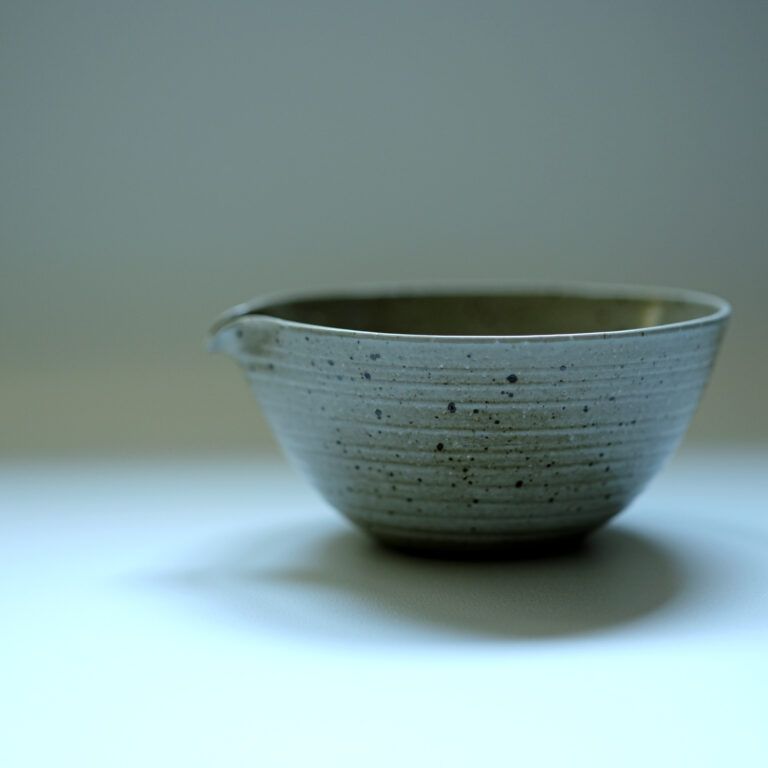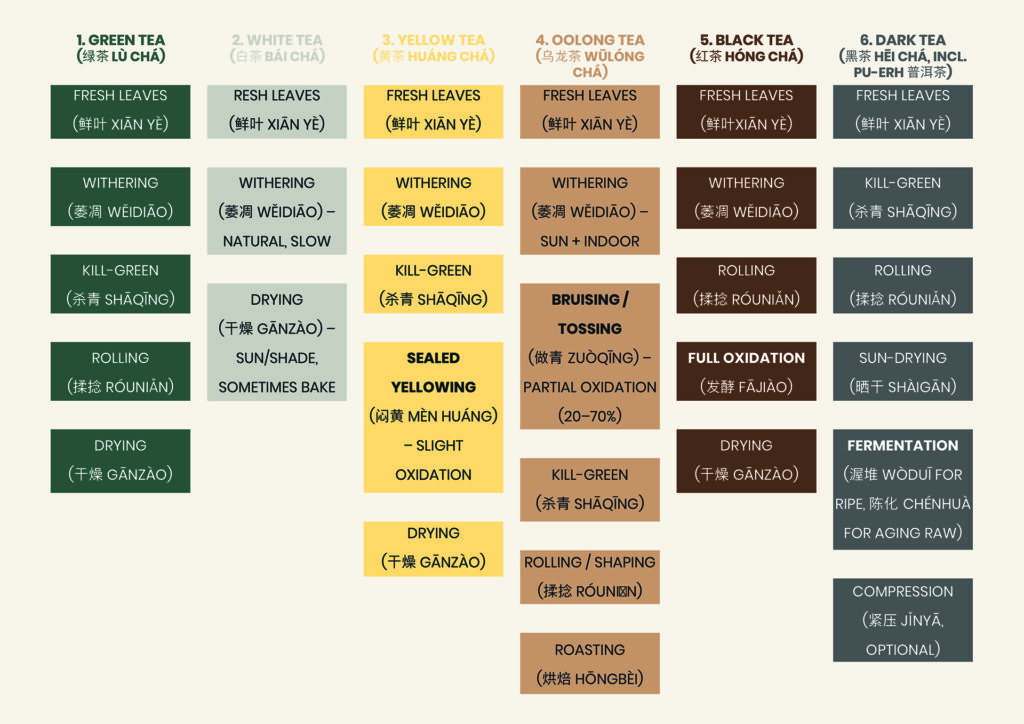The Six Great Families of Chinese Tea ///
Every Chinese tea begins with Camellia sinensis , but centuries of cultivation have produced regional cultivars, each with its own personality. Here are the six great tea families, their processes, and the leaves that bring them to life.1. Green Tea (L ǜ Chá 绿茶 )
Process: Fresh leaves → Withering → Kill-green (Sha Qing) → Rolling → Drying
Oxidation: NoneCharacter: Fresh, grassy, chestnut-like, vegetal.Famous leaves:
Longjing Qunti (Dragon Well) – ZhejiangXinyang Maojian leaf – HenanBiluochun leaf – Jiangsu
2. White Tea (Bái Chá 白茶 )
Process: Fresh leaves → Natural withering → Sun/shade drying → Light bake (sometimes)
Oxidation: Minimal (natural)Character: Delicate, sweet, honeyed, floral.Famous leaves:
Da Bai (Large White) – Fuding & Zhenghe, Fujian (used in Silver Needle & White Peony)Da Hao (Large Hairy) – variant cultivar for Shoumei
3. Yellow Tea (Huáng Chá 黄茶 )
Process: Like green tea → “Men Huang” (sealed yellowing) – gentle steaming & wrapping for slow oxidation → Drying
Oxidation: LightCharacter: Smooth, sweet, less grassy than green tea.Famous leaves:
Junshan Da Bai – Hunan (Junshan Yinzhen)Huoshan Huangya cultivar – Anhui
4. Oolong Tea (Wūlóng Chá 乌龙茶 )
Process: Fresh leaves → Withering → Partial oxidation (20–70%) → Bruising/tossing → Kill-green → Rolling → Roasting
Oxidation: MediumCharacter: Floral, fruity, roasted, layered.Famous leaves:
Tieguanyin cultivar – Anxi, FujianShui Xian (Water Sprite) – Wuyi, FujianDancong cultivars – Phoenix Mountain, Guangdon
5. Black Tea (Hóng Chá 红茶 )
Process: Fresh leaves → Withering → Full oxidation → Rolling → Drying
Oxidation: FullCharacter: Bold, malty, sweet, sometimes smoky.Famous leaves:
Camellia sinensis var. assamica – Yunnan (Dianhong)Keemun cultivar – Anhui (Keemun black tea)Zhengshan Xiaozhong (Lapsang Souchong) – Wuyi, Fujian
6. Dark Tea (Hēi Chá 黑茶 , including Pu-erh)
Process: Fresh leaves → Kill-green → Rolling → Sun-drying → Microbial fermentation (natural aging or wet-piling) → Compression (optional)
Oxidation & Fermentation: Complex, microbial-drivenCharacter: Earthy, woody, smooth, evolving with age.Famous leaves:
Camellia sinensis var. assamica (Da Ye Zhong, “large-leaf”) – Yunnan Pu-erhFuzhuan Cha leaf – HunanLiu Bao leaf – Guangxi
Each family of tea is born from the same plant, but through processing, varietal, and terroir, transforms into a completely different world of flavor.

